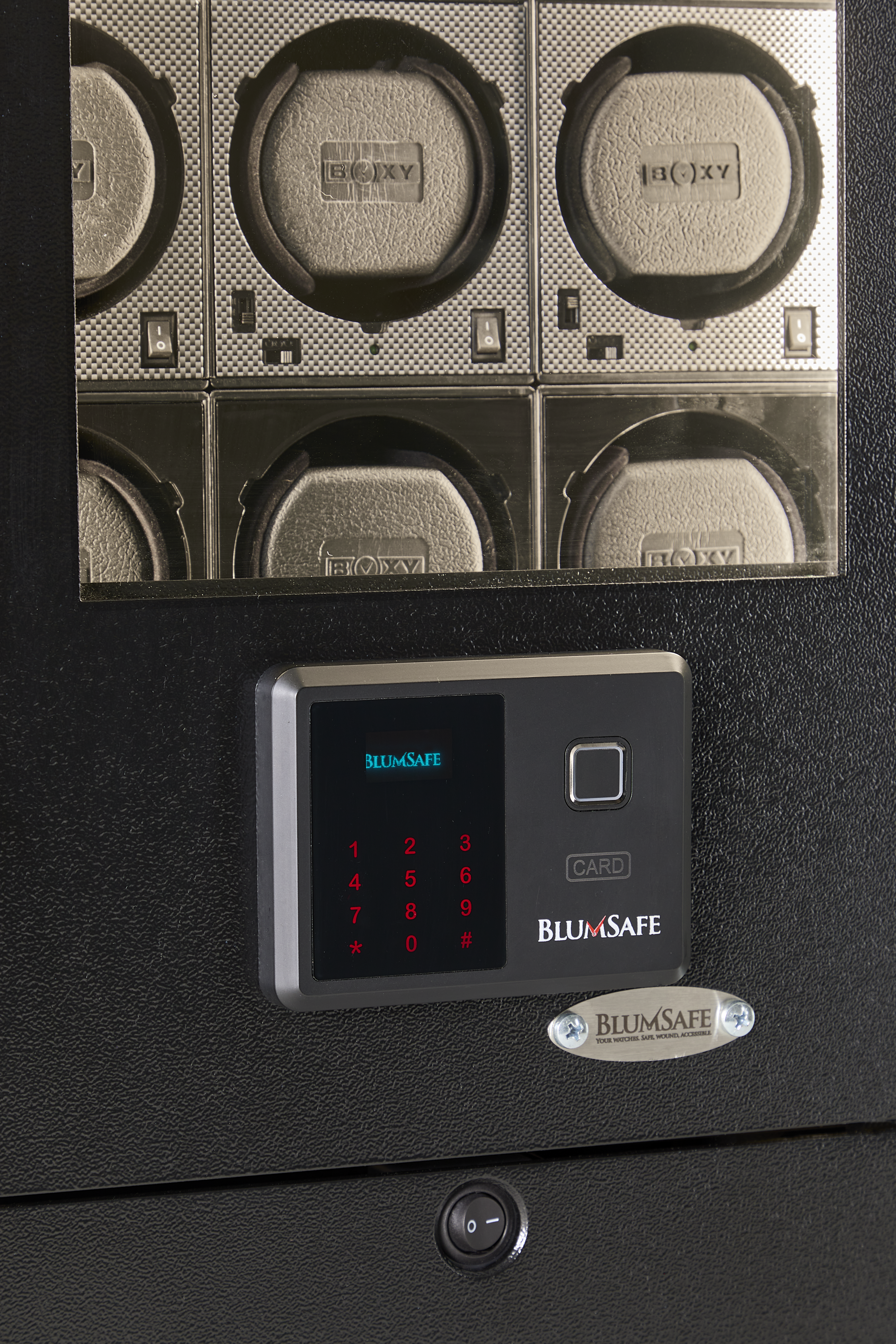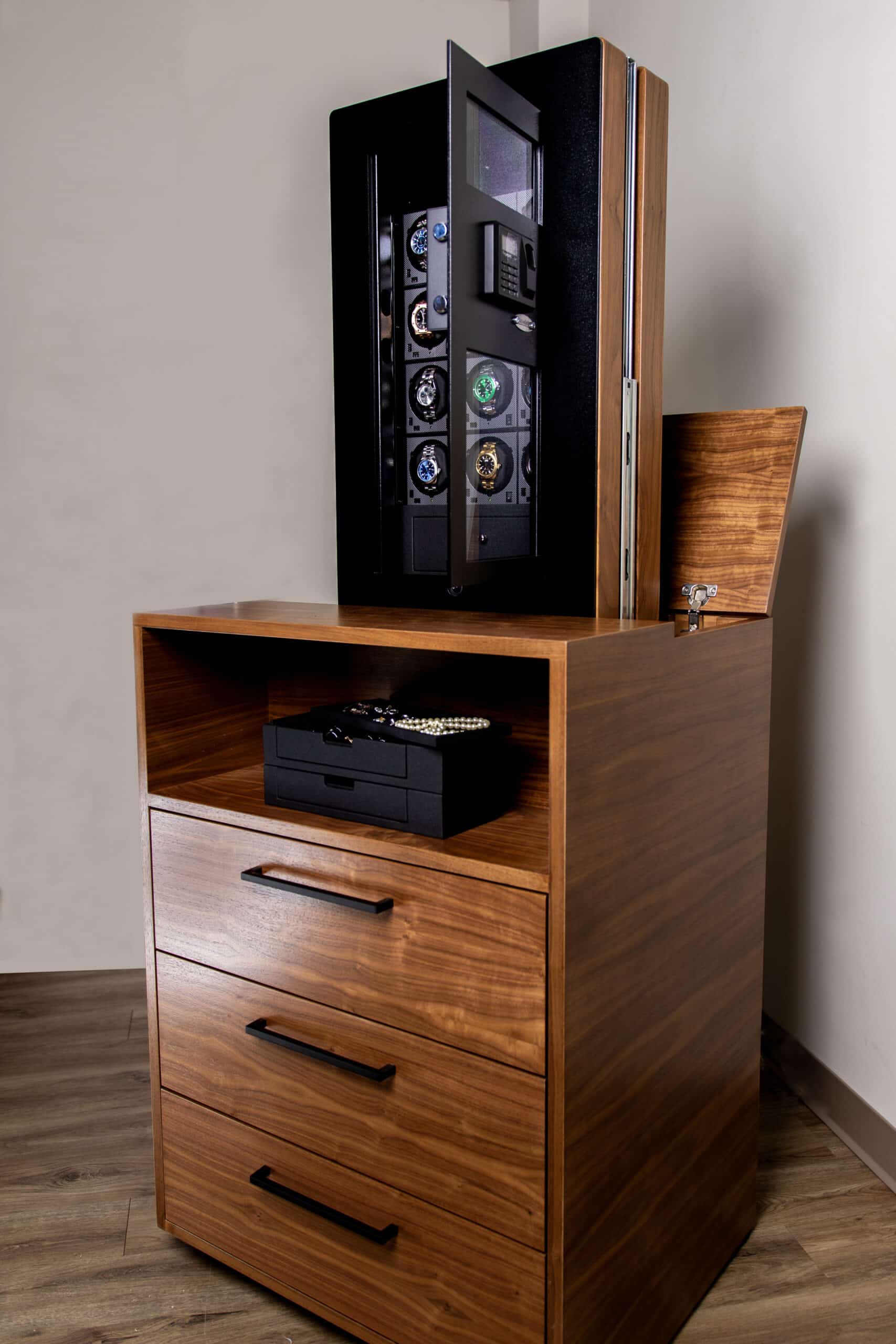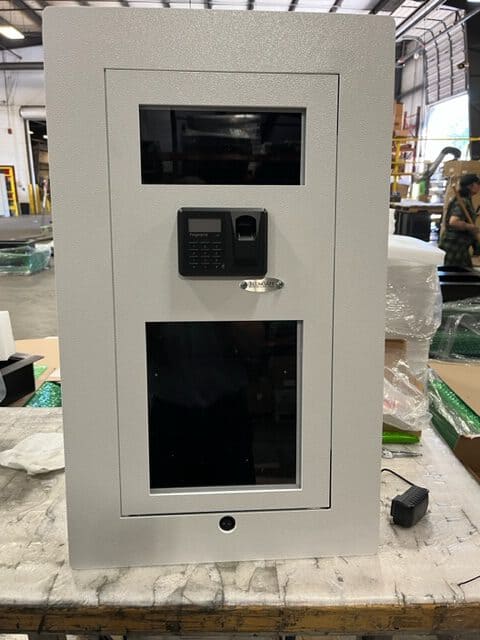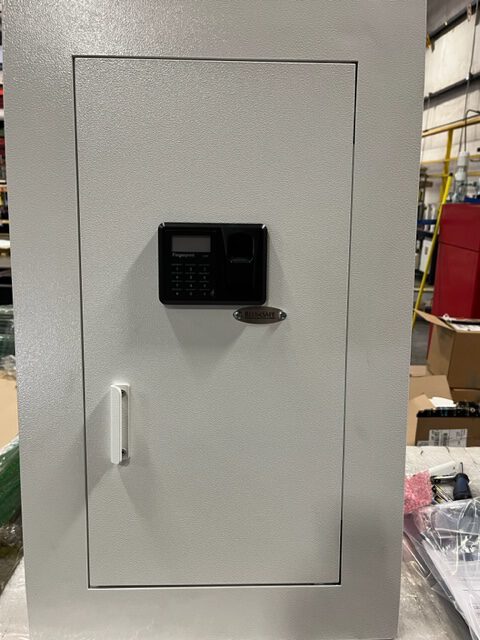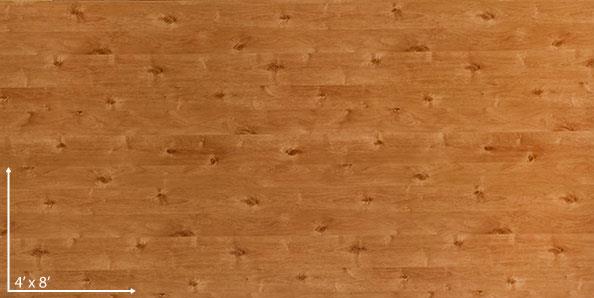A Pair of BlumSafes
By Rob Blum
At BlumSafe, we specialize in designing built-in safes for wall, cabinet, and closet mounting. These range from our steel door and display door BlumSafes, to our larger, fireproof, highest-security Class B Burglary safe, the BlumSafe Professional. While we began making these built-in safes exclusively for watch collectors using watch winders, numerous customers now use our wall safes for a wide range of valuables.
Prospective customers tend to ask us though, “Which safe is better, a built-in wall safe or a free-standing one?”
We believe built-in wall safes have some distinct advantages over free-standing safes—most notably the ability to conceal them—but below we discuss the pros and cons.
Burglars Are Becoming More Brazen, Stealing Free-Standing Safes
The question popped up the other day when I saw a news story of an elite burglary gang attacking homes in Michigan. The home security video showed the burglars sliding a big free-standing safe down a home’s outside patio stairs. Separately, several weeks ago, I spoke to a BlumSafe client in Phoenix in the security device business, who told me that a gang of professional burglars was also targeting affluent residents in nearby Scottsdale.
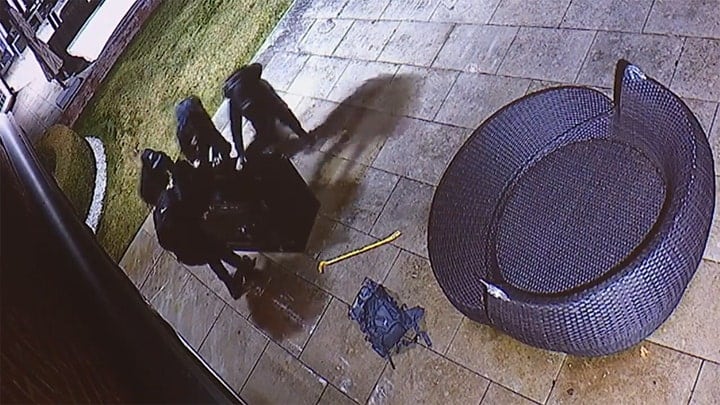
Why A Built-in Safe? First, You Have to Find It To Steal It
Together, these stories reinforced two major points. One, amidst conflicting statistics, a thirty year trend in declining burglaries in the US seems to have reversed, at least in higher value homes in major metropolitan areas. Which means we all need to focus on better property protection, including safes. Two, a big, heavy safe, even one bolted to a concrete floor but not well-concealed, will not provide the level of protection you expect.
If burglars don’t know the safe is there, they can’t steal it, and that is the greatest benefit of a built-in safe. Yes, the “wall safe” form factor offers a lot of other benefits—they save space and allow you to store your valuables in a convenient location. But in simple terms, the biggest benefit to a wall safe is this: the most secure safe isn’t always the one made with the most steel, but, rather, the one that you can’t find.
Our built-in safes can be concealed behind artwork, a mirror, or a unique BlumSafe Electronic Screen. Some of our customers and their interior designers have come up with ingenious and beautiful concealment designs, like this array of three behind a wood-paneled wall. For example, one customer placed his behind a fake electrical box.
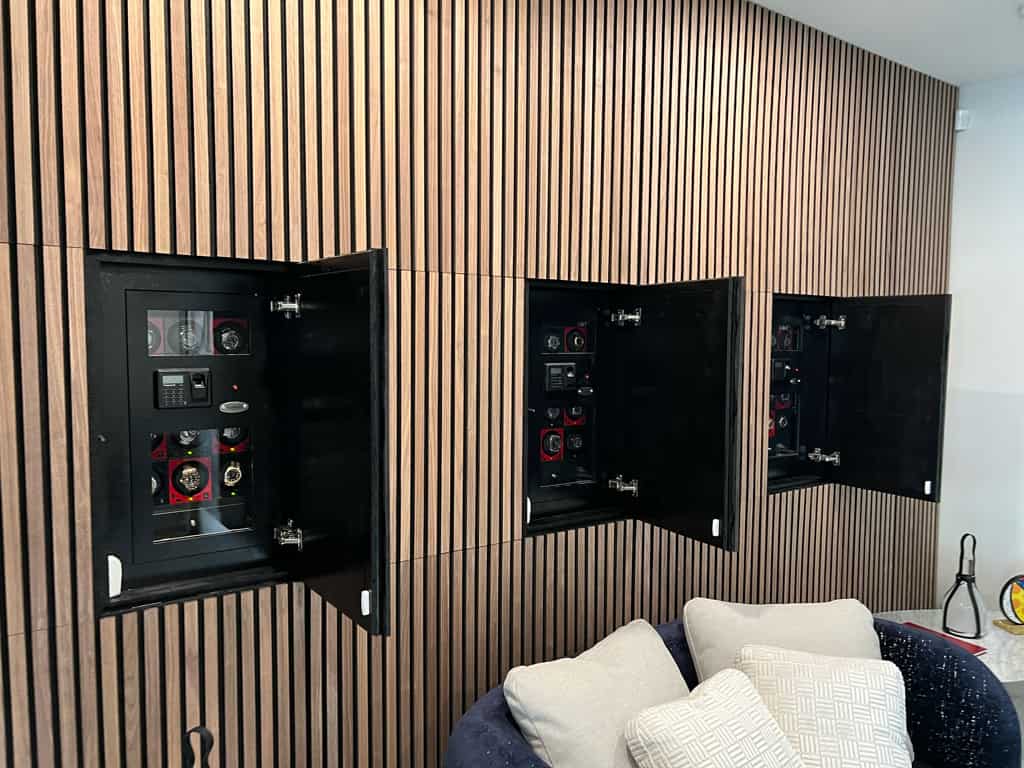
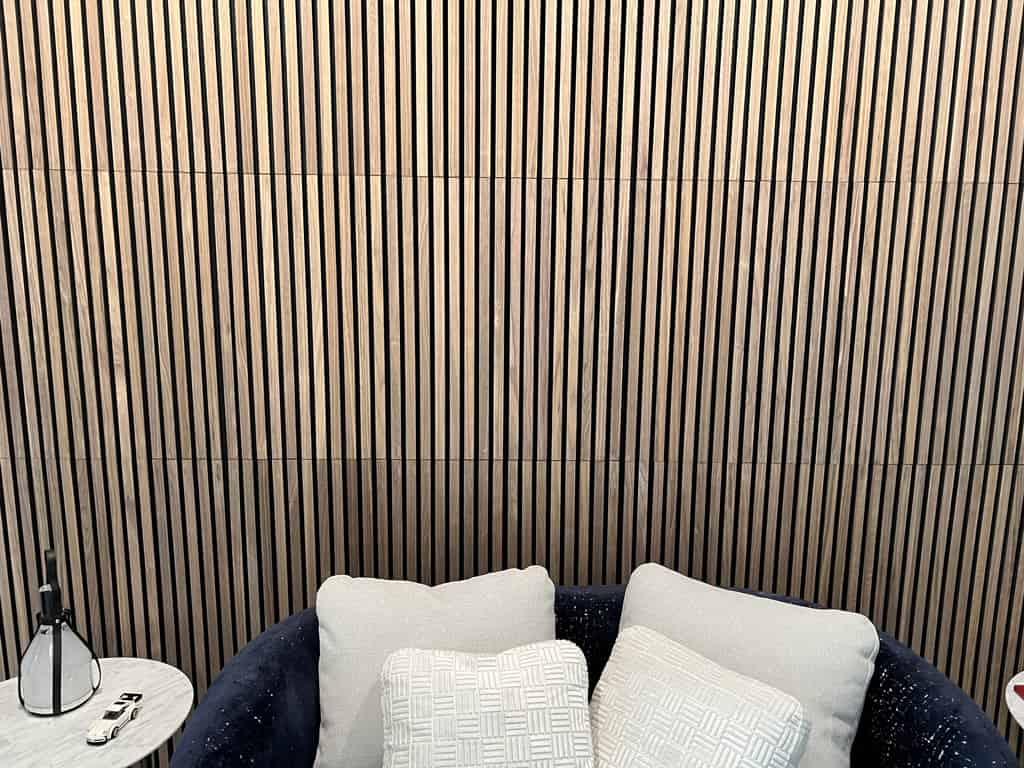
The Pros & Cons of Built-In Safes
So what are the downsides of built-in safes versus big free-standing ones, and how does BlumSafe address them?
Storage Capacity
Built-ins generally don’t have much storage capacity, having been designed to fit into 2 inch by 4-inch stud walls. This gives you very little depth of space and a smaller product. Not terribly useful if you are trying to store anything other than pill bottles.
On the other hand, we designed our regular BlumSafe model to fit up to 12 watch winders, with over 26 inches of internal height and over 7 inches of depth fitting between standard 16-inch on-center studs. So we provide significantly more internal volume for both personal and commercial safekeeping (and you get even more storage volume with our BlumSafe Professional, described below). Our clients have used our built-in safes with concealment and display doors for the following:
– Watches
– Jewelry
– Guns
– Top-shelf liquor bottles
– Cannabis products
– Fishing lures
– Medals and trophies
– Hummel collectibles
– High-value construction tools
– And more.
Location
Secondly, you need a wall, cabinet, or closet cavity in which to place a wall safe. For some folks, that can be a problem. We designed the original BlumSafe for DIY installation, and we have come up with a lot of guidance and suggestions over the years to make this as easy as possible, including offering our frame accessory for mounting in a 2”x4” stud wall when necessary.
If all else fails, we have brought the wall safe out of the wall—while retaining our ingenious concealable design innovations. BlumSafe has developed a one-of-a-kind patent pending Concealment Cabinet, which looks just like a cabinet with drawers in front, that hides a BlumSafe inside. Your BlumSafe rises into full view via voice command or remote control when you need your stuff or want to impress friends.
Steel
The third apparent disadvantage of a wall safe is that they typically are built with thinner steel than many free-standing safes, which makes them easier to break into.
So, this can be true to a point—if you can find a built-in safe. According to the FBI’s Uniform Crime Reporting Program, 65.1% of home thefts are committed by people you know, like neighbors or acquaintances. It is also worth noting that 95%+ of home thefts are either by invitees or by an opportunistic, amateur burglar who is in and out of your house in under ten minutes. These burglars typically see an opportunity and look for easy-to-grab valuables (like the watches or jewelry sitting on your dresser).
Often, these kinds of burglaries do not have the movie-grade touch you might think of: plasma cutters, people jumping in through skylights, Catherine Zeta-Jones diving through lasers, and more. They are usually not equipped with tools to break into a wall safe – even IF they find it on their mad dash through your house.
In these types of situations, a lightweight wall safe, especially if reasonably hidden or inconspicuous, will serve its purpose well. And a significant portion of our customers use their BlumSafes as a convenience accessory to a larger, heavier safe somewhere else in their house.
When facing a professional thief equipped with power tools and experience, the concealability factor of built-in safes could up the ante significantly more than if you were to own a visible, heavy free-standing safes. As we saw in the video earlier, these kinds of safes can be cracked in the house or even hauled out by a professional thief.
Having it All – The Class B Burglary BlumSafe Professional
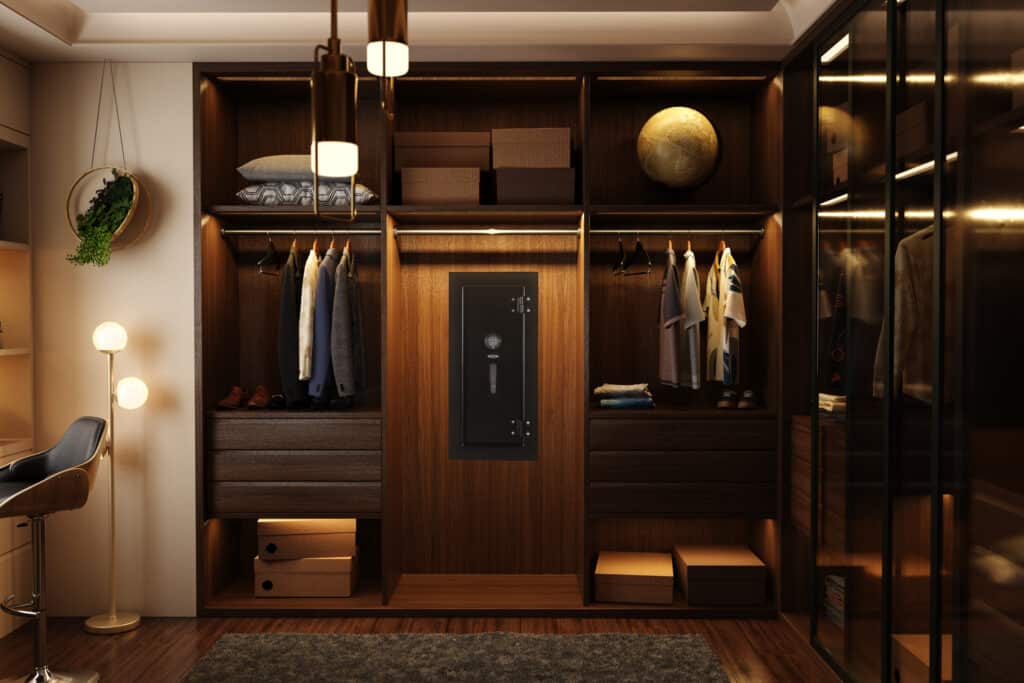
You get the best of both worlds—that is, concealability and a lot of steel to slow down a perpetrator—with our BlumSafe Professional wall safe. This is a Class B burglary safe, with a half-inch solid steel door, UL-listed lock, a range of other advanced security technology, and enough storage, at 36 inches of interior height, to replace a free-standing safe completely in many situations.
And, yes, it is available in a fireproofed format.
Built-in Wall Safes: Concealable and Practical So You Worry Less
With built-in wall safes, if you have the place in your wall, cabinetry, or closet to mount them, will offer a superior solution for your secure storage needs. In all cases, we recommend our customers to properly insure their watches and valuables kept in ANY safe.


